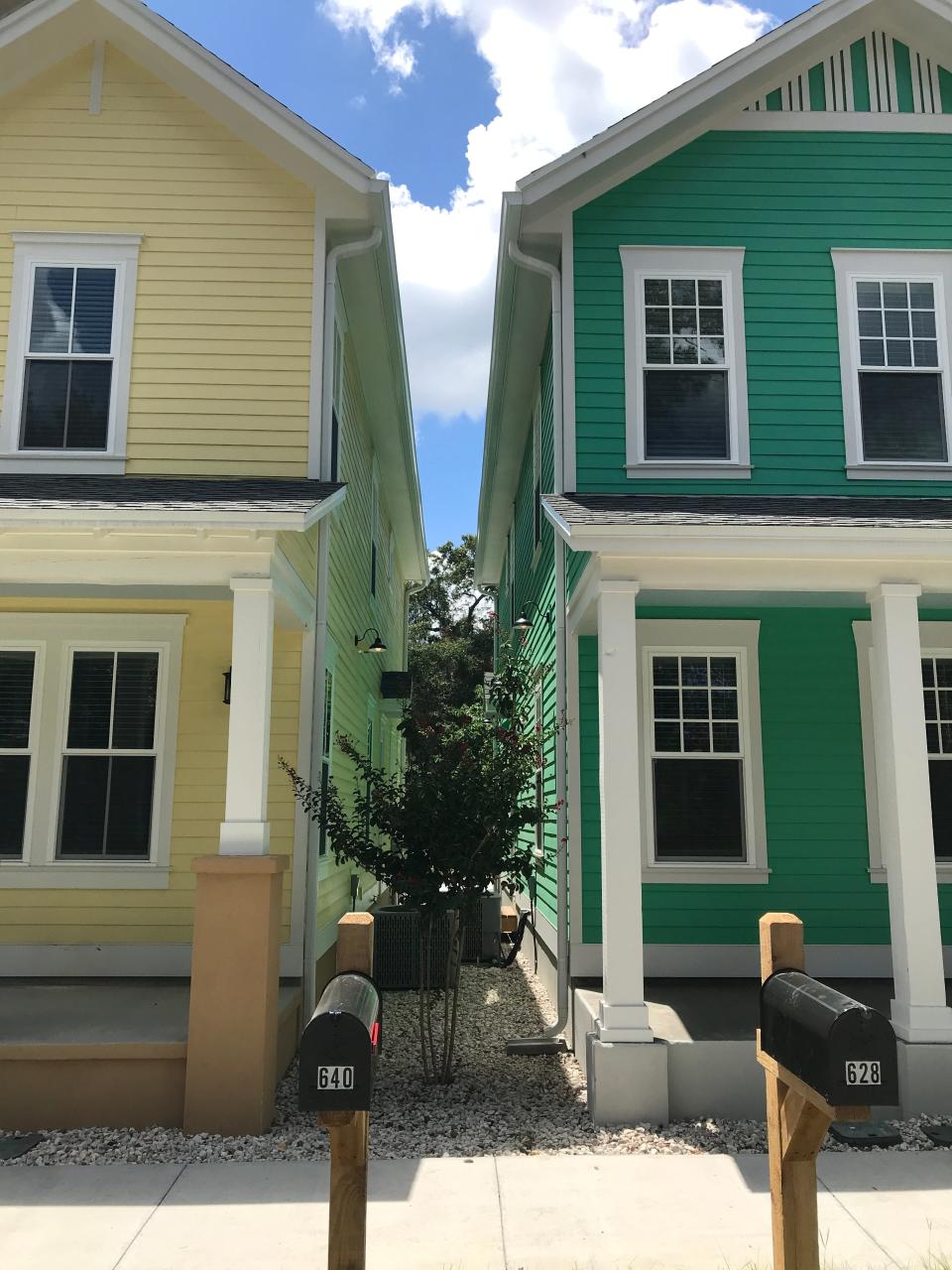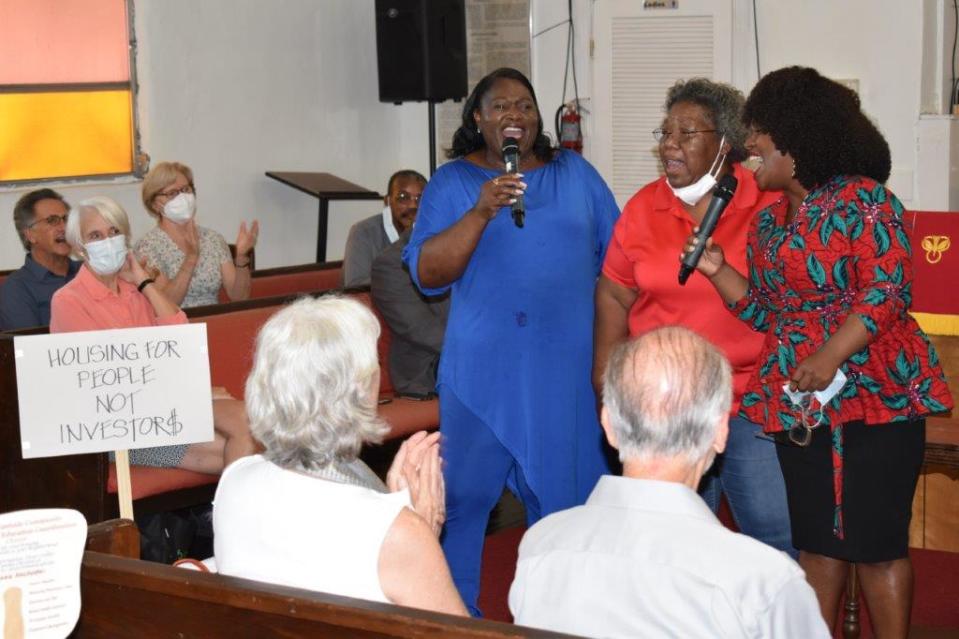Elimination of single-family zoning in Gainesville united diverse coalition in opposition
Four years ago, the City Commission began the process of eliminating single-family zoning in Gainesville, through its GNV RISE effort. In November 2018, overwhelming public opposition stopped their effort, temporarily. On Aug. 4 they accomplished their goal, at least for now.
From the beginning, the city commissioners and their supporters pitched their effort as an “us against them” battle, arguing that those who opposed the proposal were NIMBYs (Not In My Back Yard). They elaborated, saying that those who opposed random multi-family buildings (then six dwelling units per building, now four) were racists, because lots allowing only one dwelling unit per lot — no matter the size, the cost or the location — bore the stain of segregation.
The commissioners did not discuss, debate or listen. They lectured.
For my part — having never heard such an argument despite decades spent studying African-American communities and their urban patterns — I reached out to Black friends and asked what they thought. Had I missed something? Did they want to live in multi-family rental units in predominantly white neighborhoods? How could I help their community?

Without exception, my friends were baffled. While there is much local evidence of the legacies of segregation, the number of housing units per lot was not on anyone’s list of things to fix.
Along came the YIMBYs to teach us. People who self-identify as YIMBYs (Yes In My Back Yard) consider themselves the antithesis to NIMBYs. They “generously” espouse that they want small multifamily housing in their backyards. Because I want to understand different perspectives, I have tried to engage local YIMBYs.
I attended a YIMBYs’ meeting in June, as did Sun opinion editor Nathan Crabbe. He reported, “GNV4People members were outnumbered by various city officials and a handful of residents who oppose changing local zoning laws on housing.”
More from Kim Tanzer:
Why can’t we all live in a Duckpond?
Deeply affordable housing, from spoon to city
The state of Gainesville: everything, everywhere, all at once
I followed up, looking at the group’s web presence and affiliated social media sites, and it appears our local YIMBYs belong to a small but well-organized national effort determined to eliminate single-family zoning. I have heard them described as an “AstroTurf” movement — fake grassroots.
The eerie similarity of their talking points is, for me, an indication of their coordination, not just locally but nationally.
We saw this in the Aug. 4 City Commission meeting. The vast majority of speakers, including those who could not even get into City Hall to speak, were opposed to the elimination of single-family zoning, including virtually every African American. The small minority spoke with one voice (12 out of 97, according to the Alachua Chronicle).

These speakers were surprisingly similar demographically, too. They were white, young and most described themselves as current college students or recent graduates. They argued passionately that allowing quadraplexes in established neighborhoods would begin to reverse climate change by reducing car trips, reduce their rents by increasing housing supply and combat systemic racism.
Several speakers worried they will never be able to afford to buy a home unless the city allows small multi-family rentals to be built in stable neighborhoods. One thought adding quadraplexes would replace Gainesville’s suburban sprawl with a 19th century urban settlement pattern.
I have come to call some of these advocates YIYBYs, meaning Yes In Your Back Yard, because most actually do not have backyards — this is their concern.
The Aug. 4 meeting was long and, in the short term, dispiriting. A miniscule minority carried the day.
Several speakers, though, observed that the fight galvanized a large, diverse coalition. One white woman, who had attended a rally and press conference held a day earlier at the Shady Grove Primitive Baptist Church, said she had come to the commission meeting inspired by the speakers she had heard, and her new understanding of the ambitions of those living in historically Black neighborhoods.
Commissioner Cynthia Chestnut and mayoral candidate Gary Gordon both observed that the issue had united Black and white Gainesville as never before.

The hundred of us who attended that Shady Grove rally listened to poetry, pastors’ sermonizing and spiritual song, all on behalf of community under threat. We were transformed, and we are not retreating.
The problem, as I described in my brief remarks that day, is that most of the city’s vacant land is in historically Black neighborhoods, and these are the areas likely to be targeted by developers. Our neighbors need our help, and we need their vision.

Where the city’s leaders failed, for four years, to unite its residents around a common cause, real neighbors, working together, are determined to do so ourselves.
Kim Tanzer lives in Gainesville. A former UF architecture professor, she was also dean of the University of Virginia's School of Architecture.
Join the conversation
Share your opinions by sending a letter to the editor (up to 200 words) to letters@gainesville.com. Letters must include the writer's full name and city of residence. Additional guidelines for submitting letters and longer guest columns can be found at bit.ly/sunopinionguidelines.
Journalism matters. Your support matters.
Get a digital subscription to the Gainesville Sun. Includes must-see content on Gainesville.com and Gatorsports.com, breaking news and updates on all your devices, and access to the eEdition. Visit www.gainesville.com/subscribenow to sign up.
This article originally appeared on The Gainesville Sun: Kim Tanzer: Gainesville zoning fight galvanized diverse coalition

